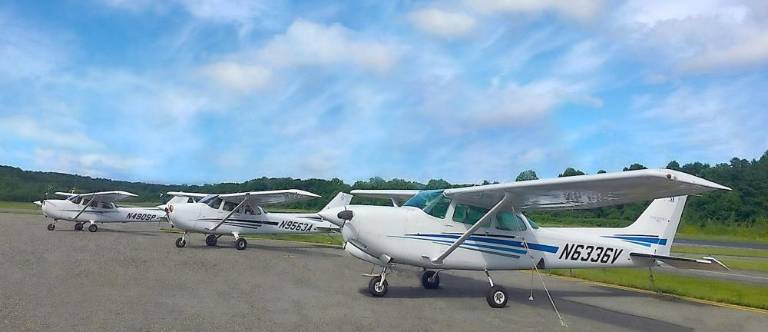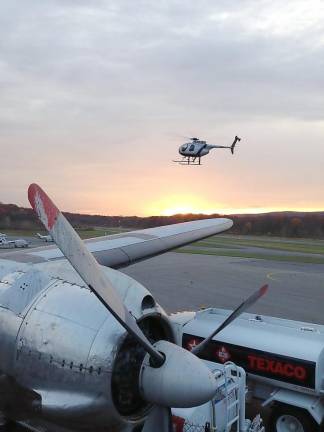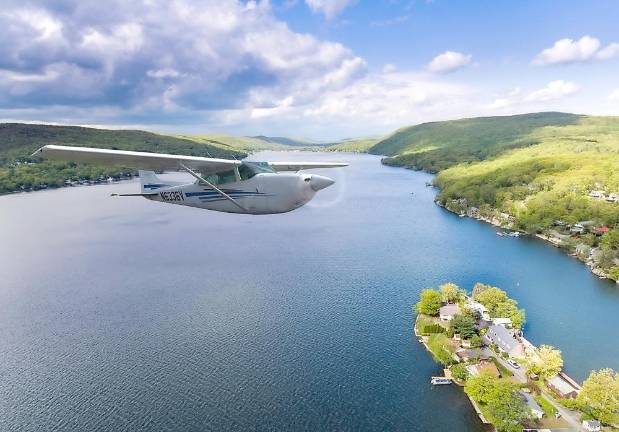Greenwood Lake Airport Master Plan update proposes nearly $30 million in improvements
West Milford. The federally funded improvements would be phased in over 20 years and include adjustments to runways, new hangers, utilities and a wildlife hazard assessment.



Greenwood Lake Airport could be eligible for grants totaling $29,391,300 if a proposal to upgrade the state Master Plan for the airport is approved and implemented.
While normally a presentation of the plan would be in a public meeting, due to ongoing concerns with the COVD-19 virus, the state shared the study online.
The New Jersey Department of Transportation owns the airport and developed the original Master Plan for it in 2007. The airport is managed and operated by Greenwood Lake Airport Manager Tim Wagner. Located in the Township of West Milford it covers 150 acres.
The Airport Improvement Program (AIP) is a federal grant program that provides funds to public use airports to help improve safety and efficiency. The program is managed by the Federal Aviation Administration (FAA). The FAA - AIP grants are distributed in a manner that reflects the priorities of the nation’s airport system. All funds allocated to an airport must be eligible and justified for projects. There is also provision for a complete wildlife hazard assessment.
Since 2005 Greenwood Lake Airport received $2,421,808 for nine individual FAA - AIP grants.
The majority of recommended airport development and implementation projects are based on the need for obstruction removal, satisfying FAA design standards, improved hangar facilities and increasing airport safety. The phased schedule identified the projects that are of highest priority.
The airport is situated entirely within the Highlands Preservation area and any development on the airport property must comply with the Highlands Water Protection and Planning Act rules. The environment is considered in the Master Plan and the plan now conforms to the Highlands Act.
Phase One
Phase One to take place now through the next five years would cost an estimated $7,480,300. It would involve tree removal, lighting of obstacle penetrations where feasible, removal of primary and transitional surfaces, demolish an existing runway and add a new taxiway access to runway 06.
Other recommendations include installation of an emergency generator for airfield lighting and communication and installation of a segmented circle, relocation of the airport beam, paving an apron and installing utilities.
There would be reconfiguration of the helicopter parking position, expansion of the airport parking as needed and future expansion for the septic system.
There is provision for a complete a complete wildlife hazard assessment. Rare, threatened and endangered species are documented as being on or in the immediate vicinity of the airport.
Phase Two
Phase Two in the following six to ten years with an estimated cost of $17,010,000 would shift the parallel taxiway to achieve runway separation.
There would be runway pavement rehabilitation. The existing T hangar would be demolished and a new 12 bay T hangar installed and additional pavement would be placed south of the T – hangar.
The report pointed out that the 12 unit T- hangar is 50 years old and should be rehabilitated or rebuilt. There would be also be implementation of the Wildlife Study recommendations in this phase.
Phase Three
Finally, Phase Three with estimated cost at $4,901,000 in the following 11 to 20 years involves addition of two new box hangars.
Price figures were based on recent construction costs at similar airports, discussions with suppliers and construction expenses on recent projects.
The airport Master Plan goals and objectives include updating the inventory of existing conditions, updating forecasts of aviation activity, determining current and future facility needs, and updating the Airport Layout Plan (ALP) to reflect planning results. Also considered are estimation of project development costs and funding eligibility, developing an airport capital improvement program and updating the airport vision for the next 20 years.